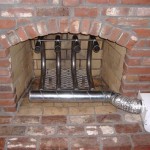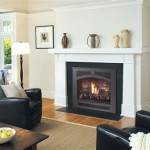Procom Gas Fireplaces: An In-Depth Look at Features, Safety, and Value
Procom Heating is a brand recognized for manufacturing a variety of heating solutions, including gas fireplaces. Known for their affordability and range of models designed to suit diverse consumer needs, Procom gas fireplaces offer a compelling option for homeowners seeking supplementary heating or an aesthetic focal point for their living spaces. Understanding the features, safety considerations, and overall value proposition of these appliances is essential for making an informed purchasing decision.
This article provides a comprehensive overview of Procom gas fireplaces, delving into their core functionalities, key features, safety mechanisms, and potential benefits. It aims to equip prospective buyers with the knowledge necessary to evaluate whether a Procom gas fireplace aligns with their specific requirements and budget.
Core Features and Functionality
Procom gas fireplaces operate using either natural gas or liquid propane (LP), serving as a direct vent or vent-free heating appliance. The choice between these fuel sources and venting systems significantly impacts installation requirements and operational efficiency. Direct vent models exhaust combustion byproducts directly outdoors through a sealed venting system, enhancing indoor air quality. Vent-free models, on the other hand, utilize room air for combustion and release exhaust gases into the living space. These vent-free models often feature oxygen depletion sensors (ODS) for safety, shutting down the unit if oxygen levels become critically low.
The heating capacity of Procom gas fireplaces is typically measured in British Thermal Units (BTUs). A higher BTU rating indicates a greater capacity to heat a larger area. Procom offers a range of BTU outputs, catering to various room sizes and heating needs. Consumers should carefully assess the square footage of the space they intend to heat and choose a fireplace with an appropriate BTU rating to ensure optimal performance. Undersized fireplaces may struggle to adequately warm the room, while oversized units can lead to overheating and inefficient energy consumption.
Controlling the heat output is another crucial aspect of Procom gas fireplaces. Many models offer adjustable heat settings, allowing users to customize the temperature to their preferences. Some units feature thermostatic controls, which automatically maintain a consistent room temperature by regulating the gas flow. These thermostatic controls enhance energy efficiency and improve user comfort.
Aesthetic features also play a significant role in the appeal of Procom gas fireplaces. The visual design can enhance the overall ambiance of a room. Procom offers fireplaces with various design options, including realistic log sets, ember beds and flame effects. The log sets are designed to mimic the appearance of natural wood burning fireplaces. Flame height controls allow users to adjust the visual intensity of the flames, contributing to a more realistic and inviting atmosphere.
Many Procom gas fireplaces now come with remote control functionality, allowing users to adjust the flame height, heat settings, and even turn the fireplace on or off from a distance. This feature adds convenience and enhances the overall user experience. Some advanced models may even include programmable timers, enabling users to schedule the fireplace to operate automatically at specific times.
Safety Considerations and Built-In Mechanisms
Safety is paramount when operating any gas-burning appliance, and Procom incorporates several safety features into their gas fireplaces. The previously mentioned Oxygen Depletion Sensor (ODS) is a critical safety component in vent-free models. This sensor continuously monitors the oxygen levels in the room and automatically shuts off the gas supply if the oxygen level drops below a safe threshold. This prevents the buildup of carbon monoxide, a colorless and odorless gas that can be lethal.
Beyond the ODS, Procom fireplaces typically include safety shut-off valves. These valves are designed to automatically cut off the gas supply in the event of a pilot light outage or any other malfunction that could lead to a gas leak. Regular inspection and maintenance of these valves are essential to ensure they are functioning correctly.
Proper ventilation is essential for safe operation, particularly with vent-free models. While vent-free fireplaces are designed to burn cleanly, they still release some combustion byproducts into the room. Adequate ventilation helps to disperse these byproducts and prevent the buildup of pollutants. It is crucial to follow the manufacturer's guidelines regarding room size and ventilation requirements when using vent-free gas fireplaces.
Installation of Procom gas fireplaces should always be performed by a qualified professional. Incorrect installation can compromise the safety of the appliance and potentially lead to gas leaks or other hazards. Professional installers are trained to ensure that the fireplace is properly connected to the gas supply, vented correctly (in the case of direct vent models), and that all safety features are functioning correctly. Following local building codes and regulations during installation is also crucial for safe and legal operation.
Regular maintenance is also essential for safe and efficient operation. This includes inspecting the burner assembly for dirt or debris, cleaning the glass panel (if applicable), and checking the venting system for obstructions. It is recommended to have a qualified technician inspect the fireplace annually to ensure that all components are in good working order and that safety features are functioning correctly.
Furthermore, the surface of the fireplace can become hot during operation. Procom typically incorporates safety barriers or guards around the hot surfaces to prevent accidental contact and burns. However, caution should still be exercised, particularly in households with children or pets. Educating family members about the potential hazards of touching a hot fireplace is essential.
Value Proposition: Cost, Efficiency, and Benefits
Procom gas fireplaces are often positioned as a cost-effective heating solution compared to other options, such as electric heaters or traditional wood-burning fireplaces. The initial purchase price of a Procom gas fireplace is generally lower than more elaborate or high-end models. This affordability makes them an attractive option for budget-conscious consumers.
Operating costs are influenced by several factors, including the price of natural gas or propane, the efficiency of the fireplace, and the frequency of use. Gas fireplaces are generally more energy-efficient than electric resistance heaters, meaning they can produce more heat for the same amount of energy consumed. However, the specific energy efficiency of a Procom gas fireplace will depend on the model and its BTU rating.
One of the primary benefits of gas fireplaces is their convenience. Unlike wood-burning fireplaces, gas fireplaces require no wood handling, storage, or cleanup. They can be easily turned on and off with the flip of a switch or the press of a button on a remote control. This makes them a convenient and hassle-free heating option.
Gas fireplaces also offer a consistent and predictable heat output. Unlike wood-burning fireplaces, where the heat output fluctuates depending on the amount of wood being burned, gas fireplaces provide a steady stream of heat that can be easily regulated. This makes them a more reliable and controllable heating source.
In addition to their heating capabilities, Procom gas fireplaces can also enhance the aesthetic appeal of a room. The realistic flame effects and log sets create a warm and inviting ambiance, making them a focal point for living spaces. The availability of different designs and styles allows consumers to choose a fireplace that complements their existing décor.
Moreover, gas fireplaces can increase the value of a home. A well-maintained gas fireplace can be an attractive feature for potential buyers, adding to the overall appeal and marketability of the property. The addition of a gas fireplace can also improve the comfort and livability of a home, making it a more enjoyable place to live.
However, it is imperative to consider the long-term costs associated with owning a gas fireplace. These costs include regular maintenance, potential repairs, and the ongoing expense of gas consumption. It is advisable to factor these costs into the overall evaluation of the value proposition.
Furthermore, while Procom gas fireplaces offer a cost-effective heating solution, it is essential to compare them to other heating options based on individual needs and circumstances. For example, if a home is already equipped with an efficient central heating system, the supplemental heating provided by a gas fireplace may not be necessary.
The selection of a Procom gas fireplace involves a thorough consideration of features, safety mechanisms, and the overall value provided. A well-informed decision ensures the chosen appliance meets specific heating requirements, complements the living space, and operates safely and efficiently.

Procom Heating Ventless Gas Fireplace Dual Fuel Vent Free With Mental Walnut Finish 15 000 Btu 170170 The Home Depot

Procom Heating

Procom Fbnsd400t 4as 32 000 Btu Vent Free Dual Fuel Mantel Build Com

Procom Dual Fuel Ventless Gas Fireplace System With Corner Combo Mante Buyersdepot Com

Procom 55 In Heritage Cherry Ventless Natural Or Liquid Propane Gas Fireplace At Com

Procom Heating Dual Fuel Ventless Gas Fireplace System With Corner Combo Mantel 10 000 Btu T Stat Control 170061 The Home Depot

Procom Dual Fuel Ventless Gas Fireplace Insert 32 000 Btu T Stat Control Fbnsd400t Zc Zoro

Procom 36in Universal Ventless Firebox Insert Zero Clearance Design Model Pc36vfc Com

Procom Qnsd250rt Ventless Dual Fuel Gas Stove For

Procom Fireplaces Climate Control Fbnsd28t 2
Related Posts








